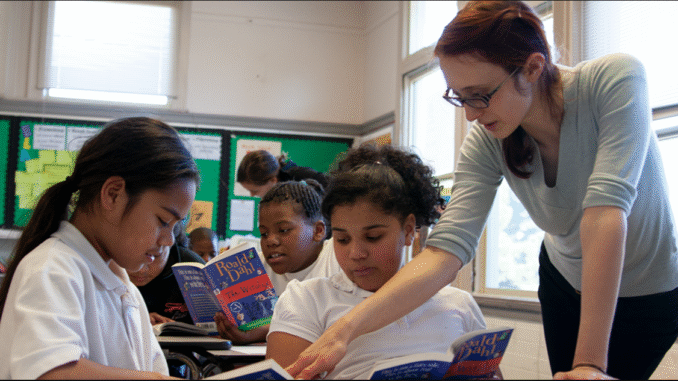
Top 10 Strategies to Improve Learning Outcomes in the Classroom
In today’s rapidly evolving educational environment, improving learning outcomes is more important than ever. Teachers face diverse classrooms filled with students of varying abilities, backgrounds, and learning styles. To meet these challenges, it’s essential to adopt effective strategies that promote better engagement, retention, and academic success.
Here are the top 10 classroom strategies to enhance student learning outcomes and create a more effective and inclusive learning environment.
1. Set Clear Learning Objectives
Starting with clear, measurable learning objectives sets the tone for effective teaching. Students perform better when they understand what is expected of them and what success looks like. Break down lessons into achievable goals and share them with students at the start of each class.
Why it works:
It creates focus, sets expectations, and provides a roadmap for both teaching and learning.
2. Incorporate Active Learning
Active learning is an approach where students are actively engaged in the learning process through activities like discussions, group work, hands-on experiments, and problem-solving. Moving beyond passive listening boosts understanding and long-term retention.
Examples:
- Think-Pair-Share discussions
- Peer teaching
- Role-playing exercises
Why it works:
Active learning keeps students engaged, increases participation, and enhances critical thinking skills.
3. Use Formative Assessments Regularly
Frequent low-stakes assessments like quizzes, quick polls, or exit tickets allow teachers to gauge understanding in real time. This feedback helps identify knowledge gaps early and informs instruction adjustments.
Why it works:
It allows for timely intervention and supports a culture of continuous improvement.
4. Differentiate Instruction
Every student learns differently. Differentiated instruction involves tailoring teaching methods to meet individual needs. This may include modifying content, varying the pace, or using different teaching formats like visual aids, audio resources, or kinesthetic activities.
Why it works:
It promotes equity by ensuring all students have access to learning in ways that suit them best.
5. Leverage Educational Technology
Integrating technology in the classroom can transform learning experiences. Interactive tools like smartboards, learning management systems (LMS), gamified apps, and educational videos help make lessons more engaging and accessible.
Popular tools:
- Kahoot! for gamified quizzes
- Google Classroom for organizing materials
- Quizlet for flashcards and review
Why it works:
Technology supports personalized learning and caters to different learning preferences.
6. Promote a Growth Mindset
Teaching students that intelligence and ability can be developed through effort and persistence fosters a growth mindset. This mindset encourages students to embrace challenges, learn from mistakes, and keep striving toward improvement.
How to do it:
- Praise effort over innate talent
- Use encouraging language
- Share stories of struggle and success
Why it works:
A growth mindset builds resilience and motivates students to take ownership of their learning.
7. Create a Positive Classroom Environment
A safe, inclusive, and supportive classroom atmosphere enhances student motivation and participation. Simple practices like greeting students by name, encouraging respectful dialogue, and acknowledging achievements help foster belonging.
Tips:
- Establish clear classroom rules
- Address bullying and bias
- Celebrate diversity
Why it works:
When students feel respected and valued, they are more likely to engage and perform well.
8. Encourage Collaboration and Teamwork
Group projects and peer interactions help students develop social and communication skills while deepening their understanding of content. Learning from peers also provides new perspectives and reinforces concepts.
Group activities ideas:
- Jigsaw reading assignments
- Team-based problem-solving challenges
- Peer editing in writing tasks
Why it works:
Collaboration enhances cognitive processing and helps build real-world skills.
9. Connect Lessons to Real-Life Applications
Relating academic content to real-world scenarios increases relevance and interest. Whether it’s linking math to budgeting or history to current events, students are more likely to engage when they see how learning applies to their lives.
How to apply this:
- Use case studies or current news
- Invite guest speakers from relevant fields
- Take students on virtual or in-person field trips
Why it works:
Real-world connections make learning meaningful and memorable.
10. Provide Timely and Constructive Feedback
Feedback should be prompt, specific, and focused on improvement. It guides students on what they did well and how they can do better. Avoid vague praise or criticism and instead offer actionable steps.
Effective feedback includes:
- Comments on specific areas of improvement
- Highlighting strengths alongside weaknesses
- Opportunities for revision and reflection
Why it works:
Students can’t improve what they don’t understand. Clear feedback fuels academic growth.
Final Thoughts
Improving learning outcomes in the classroom is a multifaceted goal that requires thoughtful planning, adaptability, and continuous effort. These strategies—ranging from clear goal setting and active learning to feedback and classroom culture—create a foundation for student success.
Educators don’t need to implement all ten strategies at once. Start with one or two that align with your teaching style or your students’ needs, then build from there. The key is consistency, reflection, and a willingness to evolve.
By embracing these best practices, teachers can transform their classrooms into dynamic, inclusive spaces where all students have the opportunity to thrive.

